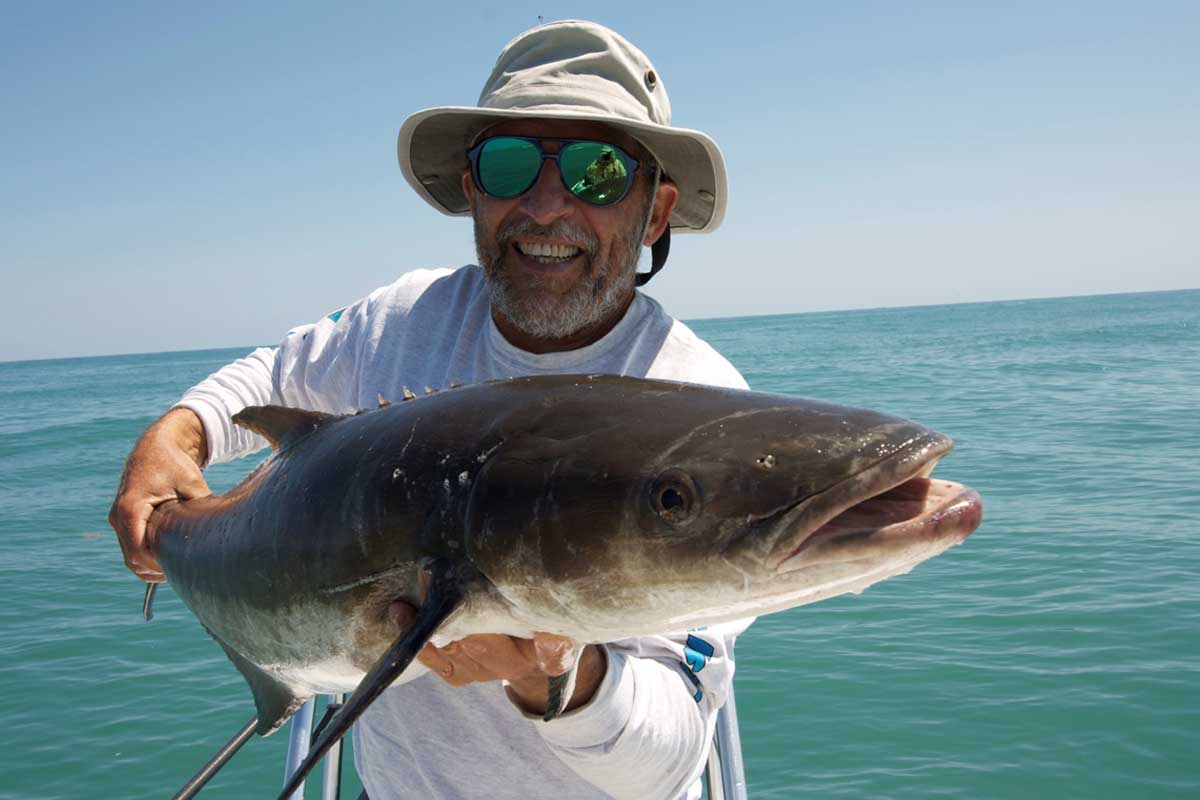
For a number of reasons, I always look forward to the glorious bloom of my azaleas. Their magnificent colors are not only pleasing to the eye, but they also signal the end of winter and the beginning of the spring bait migration. As the days grow longer and the ocean begins its gradual warming phase, 68 to 72-degree range, the spring fishing bonanza on the Indian Lagoon Coast kicks in. As usual, weather will serve as the determining factor in establishing the magnitude and progression of the bite, and forecasting Florida weather is left only to fools. Also, like the bloom of the delicate azaleas, the bite will sometimes pass quickly before you have a chance to really experience it.
Water temperature increases will facilitate the progression of bait pods (menhaden or pogies) from the deeper water into the near-shore waters bringing the predators with them. Sea conditions will determine the number of fishable days we’ll experience in March. This is especially true for those of us who target deep-water species in shallow water boats. The cobia should be moving into our area soon, and both the bait pods and cobia have begun to show up on the near-shore wrecks and reefs outside Port Canaveral and Sebastian Inlet.
Other nearshore options consist of tripletail hanging on floating structure and weeds and large redfish and sharks shadowing bait pods near the beaches and inlets. When site fishing for cobia, keep the sun to your back and consider fishing in the latter part of the day when the sun is high. Also, always keep a buck tail jig in the ready position to cast.
As the water warms up on the inshore lagoon flats, silver mullet will begin to return from their winter vacation as they migrate north. This change marks the beginning of spring feeding transition where predator species feeding habits shift back from crustaceans to fin fish and topwater trout fishing plug fishing improves. If you haven’t herd, redfish populations on the lagoon have diminished along with the seagrass, so catching them can be challenging. The redfish are still out there, but you must look long and hard in the right locations to find and catch them. Water clarity has improved greatly this year, so let’s pray for the return of seagrass and the baitfish it supports. Our savior thus far has been the schools of black drum that are abundant if you look in the right places ranging in the 15 to 25 pounds.
Finally, the American shad run has on the upper St John’s River between the areas of Lake Harney and the SR 50 Bridge has been slow thus far. Also, March is the month to start targeting schooling largemouth bass in the deeper bends of the river at first light feeding on schools of baitfish (menhaden). The indicator I use to locate these schooling bass, is to look for large numbers of white pelicans, herons, and egrets working the banks. Once you’ve located the schooling fish, try throwing a rattletrap, other small subsurface swim bait or a DOA Shad tail. Currently, the black crappie bite has been good, and the bluegill and shell cracker will be on the beds soon.
All in all, spring is one of the best times of year to fish the Indian River Lagoon coast of Florida. So, if you are planning to visit the area for a fishing adventure, make sure you book your hotel and fishing guide early. Also, when the bite is on, the ramps fill up quickly, so arrive early, be courteous and considerate with other anglers, because we are all on the water for the same reasons.
As always, if you need information or have any questions, please contact me.
Good luck and good fishing!


Great report Tom, thanks!